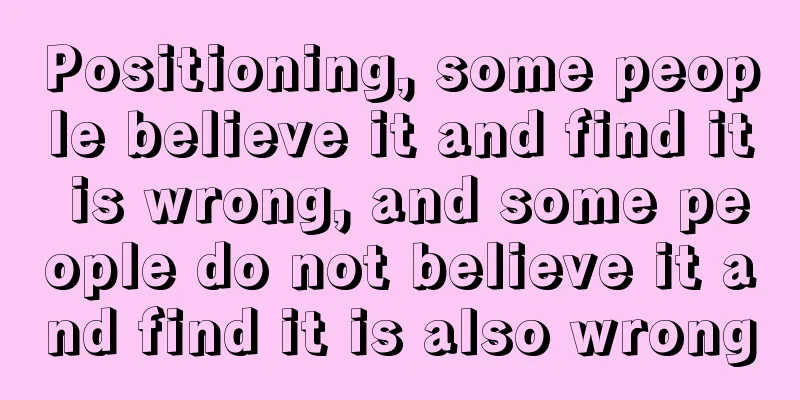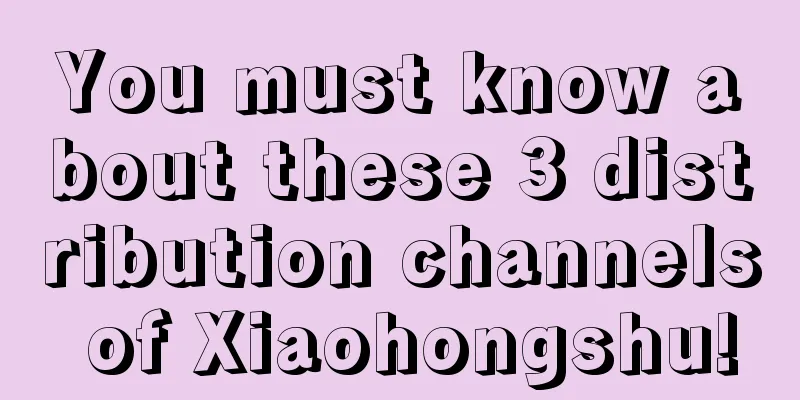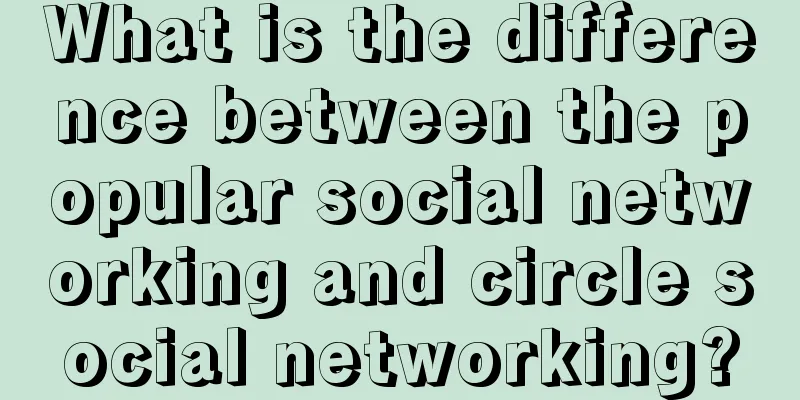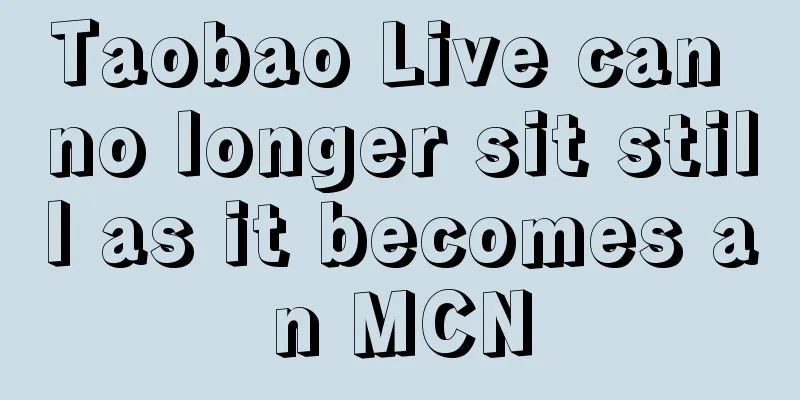Positioning, some people believe it and find it is wrong, and some people do not believe it and find it is also wrong

1. Positioning: Some people believe it firmly, while others doubt it.After drastically cutting SKUs, Three Squirrels "returned" to nuts. In the words of Zhang Liaoyuan, our positioning in the past era of traffic was too broad, and our failure to focus went against the minds of consumers. Why didn’t we pay enough attention to it before? Because it is difficult to do subtraction. It is easy to gain weight but difficult to lose weight. When we face this logic, we will return to nuts and build Three Squirrels into a global outstanding brand. What will enable us to stand firm in the world in the future? There is only one answer, which is nuts—Zhang Liaoyuan. Three generations of consumer brands:
These three generations have more or less external dividends. 1.0 The bonus is in the product. If you dare to release the product, the market is yours; for example: Shazi Guazi. The 2.0 dividend is in centralized media. CCTV’s 10-year bid winning number is the epitome of 2.0, for example: Wahahaha. The 3.0 bonus lies in online traffic. The essence of the Internet is a channel. From 020 to B2C and C2C, it is essentially the price potential brought about by disintermediation, such as: Three Squirrels.
From a business perspective, this is a question of short-term and long-term. Enterprises need to solve two problems: survival and development. Sometimes, in order to survive, survival becomes a habit, forgetting that development is a long-term career. It is so difficult to keep the original intention in mind. Whether a brand needs to be positioned is not determined by the company's will, but by the competitive environment in which the company is located, that is, the track you are in and the competitive environment. In essence, it is necessary. 2. 2 major features and 3 major challengesIn the past two years, the word "new" was added in front of consumer goods, which is quite interesting; in the past two years, this "new" has disappeared, which is even more interesting. In essence, we still have to go back to user insights and category differentiation. The so-called new: on the one hand, it is the iteration and replacement of people, and on the other hand, it is the differentiation of goods.
Looking back at the past 5 years from now, almost all the consumer brands you can see have carved out a niche with unique and differentiated functions and characteristics in a large category. The product, design, ingredients, function, and packaging are developed around this function and characteristic, and the original users are driven to resonate in the market through KOL/C, Internet celebrities, and stars. for example:
Of course, some of these once popular brands have now disappeared, while others are barely surviving. Zhong Xue Gao, which was once praised to the sky, is now nowhere to be seen. In essence, we still have to return to the basics and basic strategies. A brand without offline channels is like a rootless weed swaying in the wind, and it can never become a big tree with roots. To become a big tree, you need both online and offline. Breaking the circle online, increasing the volume; offline channels, fundamentals. As a brand, what is the competitive environment you face? Simply put: three big mountains.
Today, the competition structure of a consumer brand in the industry is roughly as above. Facing the pressure of the "three mountains", how can a brand escape and find a blue ocean? This is not only a matter of survival, but also a matter of development. 3. How can brands escape death and find blue ocean?
1. OccupancyIf you look at the market, you will see crowded shelves and red oceans everywhere; if you look into the minds of consumers, you may find a blue ocean. The difference in cognition is far greater than the difference in reality. It is very difficult to establish an external cognitive perspective. Before Naitangpai, consumers did not know that there was a special large-cup bra brand, but that does not mean that other brands on the market do not have large-cup bras. This is a typical mental opportunity that exists in the market but is not known. For example: Volvo's safety car. This is an interesting thing. The interesting part is that the brand has formed the positioning of an expert brand in the minds of consumers. By focusing on products, user co-construction, and DTC, Naitangpai has built a tower to the sky between the "three" mountains. In July 2015, Naitangpai started to build a community on Douban. The article "Must-read before joining the group: the origin and ideas of Naitangpai" shared insights into Naitangpai consumers. For example, domestic large-cup bras are highly repetitive, and most of them are "mature-looking" bras that girls dislike; European and American brands do not fit the Chinese body type, and their aesthetic needs are also different. The insight into the pain points of target consumers stimulated potential demand, and Naitangpai completed the first step through content, traffic, fans, and monetization. How to discover mental opportunities:
How to discover mental opportunities can be done from two aspects: customer situation and competition analysis. The purpose of understanding customer situation is to find out the expressions of categories and characteristics in consumers' spoken language, and then find the trend of category differentiation. The purpose of competition analysis is to find the gap of misaligned competition by understanding the advantages of competitors. Five dimensions of customer status: category affiliation, feature orientation, purchase reason, demand expression, and customer evaluation. The five dimensions of competitive analysis: reasons for selection, strongest alternatives, pros and cons analysis, customer characteristics, and market performance. To achieve the goal of clarifying the competition pattern and exploring the cognitive gap. That is: customer cognition + category differentiation + misaligned competition = mental opportunity. Customer cognition is the foundation, category differentiation is the track, and misaligned competition is the production space. 2. Find the differenceWhat needs to be made clear here is that the differences are not just differences at the physical level, but more of differences that permeate from the physical level to the cognitive level. now that: From perception to feeling; From eyes, ears, nose, tongue, body to mind; From the physical properties of the product to its mental characteristics; From the mouth to the heart:
For example: Nongfu Spring says it’s a bit sweet, but you say it’s not okay if it’s a bit sweet. It’s not that your product is not okay, but that consumers don’t recognize it. New consumer brands must be able to penetrate from the differences at the physical level to the differences at the cognitive level - either ban the category or occupy the characteristics. In this process, it is clear that Meiji Landou is closing the category, while Meifei is occupying the characteristics. Of course, cheese sticks are not equal to cheese, which is the point that Meifei and Meiji Landou need to break through next. For example, Santonban faces the problem of how to occupy the instant market. In dramatic scenes, it can strengthen the dramatic expression of "everything can be Santonban" and launch the instant challenge. In addition, it can go offline appropriately. Instant super experience stores, urban pop-up stores, and channel stores are the way out and the foundation. Ramen Says is facing the challenge of how to occupy the instant noodles market and become the first choice. If it only stays at the material level, it will be constantly challenged and even defeated by its competitors. Before, Zihaiguo made a scene, and your troubles came. Invisible opponents are often more powerful than visible opponents. Of course, for Ramen Says, the best time has been missed. Once the brand's potential energy is lost, it will be too difficult to regain momentum. 3. Create contentIn the past, an advertisement could live for 35 days, but now it can only live for 10 days. In two years, an advertisement may only live for one day. Even when you post the advertisement, it is already dead. What a funny thing! You happily post a circle of friends, but you don’t know that the next second after you post the circle of friends, your advertisement is already dead. Even if your differentiation is strong and informative, it may be quickly drowned out by the chaos of information. At this time, dramatic expression is needed to attract consumers' attention. The way is to create content, not advertising. To this end: advertising should be content-oriented, news-oriented, and event-oriented.
For example, Sandunban launched a return plan. It took care of users, offline, and channels at the same time. The most important thing is that it has both content and events. In contrast, Xiaoxiandun’s empty bottle recycling is a little bit lacking. For example: It is said that Painting is the first Chinese brand to print the designer’s name on the packaging, which has surpassed the competition at the product level. It also surpassed the 999 “Ganmao Ling Ramen” mentioned by the previous wave of ramen. The next wave is even more exciting. Another example: if everyone is flocking to the national style, the national style is no longer the style. Buff X combines health preservation with punk, which is also very cute and lasting.
4. Focus firstEating is natural, getting fat is human nature, and gluttony is human desire. It is easy to make more and more products, and it is easy to make the product line wider and wider. The result of wanting this and that is that the operation loses focus.
It is easy to fall into internal thinking when making products. If the extension of the product line exceeds the radius of brand recognition, the brand will gain short-term benefits but suffer long-term losses. Short-term benefits come from brand and traffic. When the traffic dividend is weak and the brand is overwhelmed by the extension of the product line, problems arise. Many problems are caused when the business is at its peak, and they only surface after the peak. For example, Three Squirrels cut 300 SKUs, which is the first time that Three Squirrels has reduced its SKUs by half since its establishment 8 years ago. The core of understanding operational matching lies in understanding organizational resources (tangible and intangible). Products should be built around brands, and brands should be built around building superior cognition. Superior cognition can either block categories or occupy characteristic words. Author: Houshan Keju, Source: WeChat public account "Lao Gao Business and Brand" |
<<: The most comprehensive ChatGPT entrepreneurial direction! Who is the next ByteDance?
>>: Discussing cost performance
Recommend
Beautiful women on the catwalk, bringing in over 100 million yuan in sales
In the past 30 days, the beauty catwalk live broad...
Businesses are doing business with young people’s emotions. Can’t they get away with losing money by spending 10 yuan?
In recent years, a consumption model has become po...
Luckin Coffee’s sauce-flavored latte is a huge hit. Is Starbucks worried?
This article discusses how Starbucks reacted to th...
What does Amazon store association mean? What are the reasons for association?
Many merchants on Amazon do not just open one stor...
How to refund if eBay does not ship the goods? How to deal with it?
Nowadays, many people have high requirements for t...
Pay for knowledge, and end the relationship as soon as the deal is completed!
Do you know about knowledge payment? Do you know h...
What are the rules for listing products on Lazada? What do I need to abide by?
After we open a store on the Lazada platform, we n...
Which cross-border e-commerce platform allows individuals to open a store? How to choose?
Many people want to do cross-border e-commerce, bu...
What kind of answers did Bilibili and Xiaohongshu give in terms of "commercialization"?
Most content communities will face certain commerc...
Zhihu’s “traders” reflect the ups and downs of the text community over the past 20 years
The highly praised answers on Zhihu are reposted a...
5 steps: Teach you how to plan live streaming sales from 0 to 1
As the momentum of live streaming sales is getting...
How do cross-border sellers transform and upgrade their brands?
The development of cross-border e-commerce platfor...
How is Shopify Japan? What is the magic of Shopify?
Shopify is suitable for cross-border e-commerce to...
How to bind Orange Logistics to eBay? How to calculate Orange Logistics fee?
As a professional cross-border logistics service p...
Is there any risk in changing the brand on Amazon? How to register the Amazon brand?
When opening a store on Amazon, you may need to ch...









